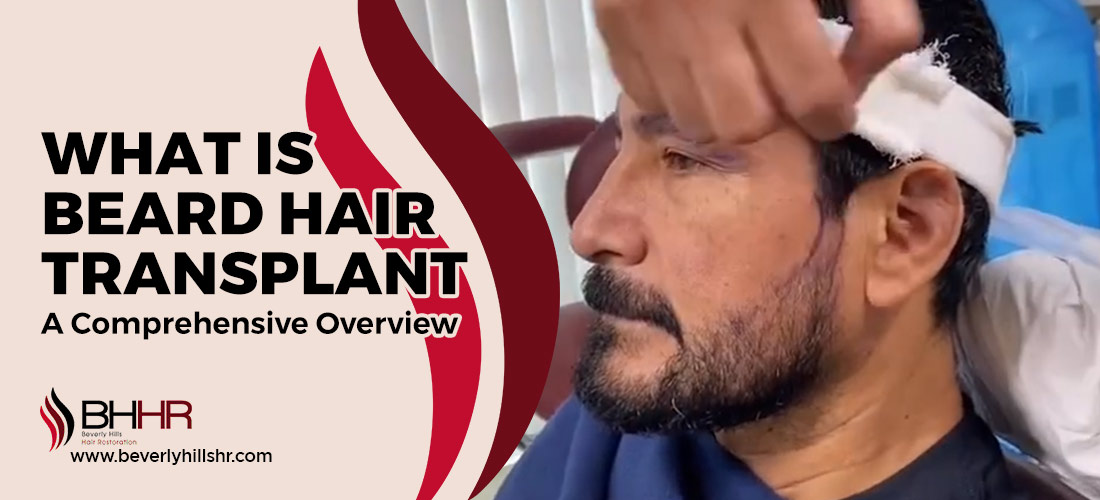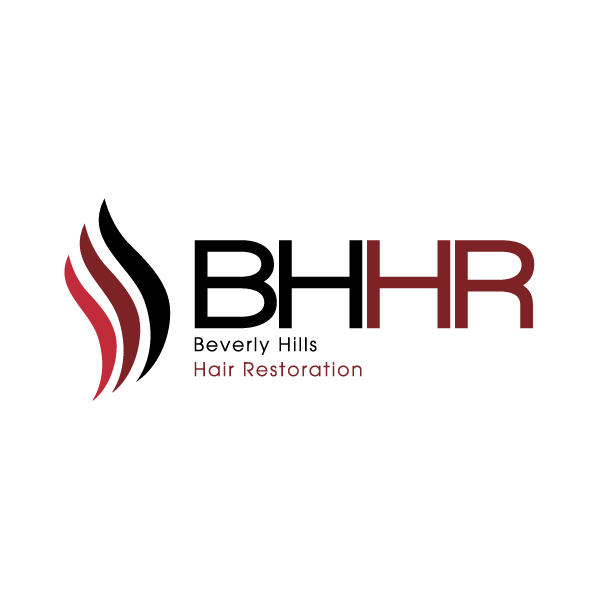What is Beard Hair Transplant: A Comprehensive Overview
Home / Beard Hair Transplant / What is Beard Hair Transplant: A Comprehensive Overview
Updated On : July 18, 2024 | Category : Beard Hair Transplant | Author: Beverly Hills Hair Restoration Team

Beard hair transplants have become a sought-after procedure for individuals looking to enhance or establish growth in areas where beard hair is sparse or non-existent. This surgical technique involves transplanting hair follicles from one part of the body, typically the back of the scalp, to the face to promote growth in beards or mustaches.
This article explains beard hair transplants and how they can enhance one's appearance and boost self-confidence. At Beverly Hills Hair Restoration in Los Angeles, we specialize in offering this sophisticated solution, providing natural-looking results for those who seek to enhance their beard hair. Through this exploration, we aim to inform readers about the procedure's intricacies, its benefits, and why many are turning to beard hair transplants as a solution to beard hair loss or thinning.
What is Beard Hair Transplant?
A beard hair transplant is a surgical procedure that aims to increase the density and improve the appearance of facial hair in the beard area. It is particularly sought after by men with patchy, sparse, or non-existent beard growth due to genetics, scarring, or medical conditions. The process includes removing hair follicles from the back or sides of the scalp, usually from a donor area with denser and more resistant hair to balding. These follicles are then meticulously implanted into the beard region, following the natural growth pattern to ensure a seamless and aesthetically pleasing result.
Beard hair transplants are performed under local anesthesia and can take several hours, depending on the number of grafts required. Patients typically experience a short recovery period, with many able to resume their normal activities within just a few days. However, it may take several months for the transplanted hair to grow and seamlessly integrate with the existing facial hair. This procedure enhances the fullness of the beard. It allows for the shaping and customization of the beard line, boosting confidence for those seeking a more defined and masculine facial appearance.
Procedure Details of Beard Hair Transplant
Consultation and Planning
To understand beard hair transplants at Beverly Hills Hair Restoration, start with a Free Hair Transplant Consultation with Dr. John Kahen. He will discuss your goals and devise a personalized plan accordingly. Then, the surgeon evaluates your beard structure and donor sites for a natural look.
Harvesting and Preparation of Donor Hair
Next, hair is harvested from the donor area. The back of the scalp is usually known for its resilience and compatibility with beard hair. These follicles are then carefully prepared under a microscope before transplantation.
Implantation Process
The carefully prepared hair follicles are artfully placed in the desired facial areas, following the natural growth patterns. Positioned at the right angles and density, they seamlessly blend with your existing hair, providing an honest and appealing appearance.
Recovery
Recovery from a facial hair transplant takes a few days, but visible results take 3 to 6 months. Initially, crusts form at the transplant site, which will flake off in a few days. Regular beard shaving can resume in a week. Implanted hair falls out in 2 to 3 weeks, allowing new growth.
Benefits of Beard Hair Transplant
Understanding the benefits of beard hair transplants reveals a range of advantages, mainly when performed at Beverly Hills Hair Restoration.:
- Least Invasive: The procedure is minimally invasive, making it a preferred option for those seeking beard hair enhancement without extensive surgery.
- Far Faster: The process is relatively quick; the transplantation takes only a few hours.
- Minimal Pain or Discomfort: Patients experience minimal discomfort during and after the procedure, thanks to local anesthesia.
- Local Anesthetic Required: Only a local anesthetic is needed, eliminating the risks associated with general anesthesia.
- No Incisions, Scalpels, Stitches, or Staples: The procedure does not require incisions, reducing the risk of complications and making the recovery process smoother.
- Faster Recovery Time: Patients can expect a quick recovery, often returning to normal activities within a few days.
- Exceptionally Natural in Appearance: The transplanted hair grows naturally and blends seamlessly with existing beard hair, providing a natural look.
Who is a Suitable Candidate for a Beard Hair Transplant?
A candidate for a beard hair transplant is typically someone who has sparse or patchy beard hair and desires a fuller, more even beard or mustache. Good candidates have good overall health and realistic expectations about the procedure's results. Conditions that can be treated with a beard hair transplant include genetic predisposition to thin facial hair, scarring from accidents or surgeries, and hormonal imbalances that affect beard hair growth. At our Hair Transplant clinic in LA, we assess each candidate carefully to determine if they are suitable for a beard hair transplant, ensuring the best possible outcomes for our patients.
Conclusion: Elevate Your Look with Beard Hair Transplantation
Exploring the process of a beard hair transplant reveals it as a minimally invasive, effective solution for enhancing beard hair appearance. Dr. John Kahen specializes in this procedure at Beverly Hills Hair Restoration in Los Angeles, ensuring natural-looking results with minimal discomfort and downtime. Beard hair transplants permanently solve beard hair loss, boosting confidence and self-esteem. With advanced techniques and skilled surgeon, Beverly Hills Hair Restoration ensures a seamless consultation and recovery experience. If you're considering enhancing your beard hair, a beard hair transplant may be the perfect solution to achieve the desired appearance and restore your facial hair's fullness and definition.
Embark on the journey to a fuller head of hair today by scheduling your free hair transplant consultation at Beverly Hills Hair Restoration. Call us at 310.289.0901 or visit our clinic for more information. We're here to help you achieve the natural-looking results you deserve.
